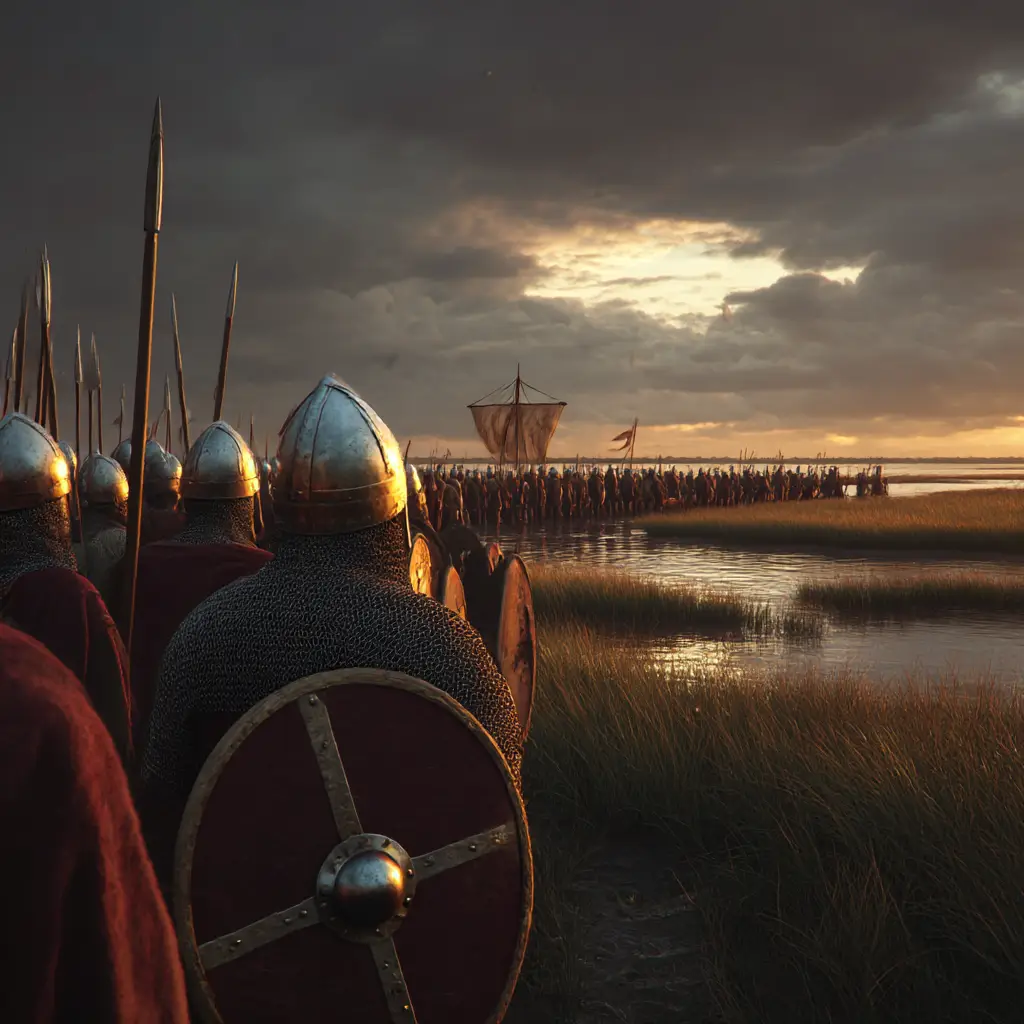The Vikings and the Battle of Maldon
The Battle of Maldon, fought in the year 991, was a defining conflict between Anglo-Saxon forces and Viking raiders on the shores of Essex. This clash is remembered both for its historical importance and its portrayal in a celebrated Old English poem. The battle illustrates the intensity of Viking activity in England during the late 10th century and the challenges faced by local rulers in resisting Scandinavian incursions.
Historical Context
By the late 900s, Viking raids had become a persistent threat across England. The Norsemen, primarily from Denmark and Norway, targeted coastal settlements, monasteries, and towns. These raids were often fast, brutal, and economically motivated. However, they also formed part of a broader strategy of territorial control and political pressure on English kingdoms.
In 991, a Viking fleet is believed to have landed near Maldon in Essex, likely numbering around 90 ships. The raiders were met by the forces of Byrhtnoth, the elderly but respected ealdorman (nobleman) of Essex, who led the local fyrd (militia) in defence of the region.
The Course of the Battle
The battle took place near the causeway that connects the mainland to Northey Island in the River Blackwater estuary. According to the surviving poem The Battle of Maldon, the Vikings initially held the island, and the tide created a natural barrier. The two sides exchanged words, with the Vikings demanding tribute for peace. Byrhtnoth refused, choosing instead to fight.
In a gesture of honour and overconfidence, Byrhtnoth allowed the Vikings to cross the causeway to face his troops in open combat. Once across, the battle began in earnest. The Anglo-Saxons fought valiantly, but they were outnumbered and ultimately overwhelmed. Byrhtnoth was slain, and his death led to the collapse of the English resistance. The Vikings claimed victory and likely plundered the surrounding area.
Viking Strategy and Motivation
The Vikings at Maldon were not simply opportunistic raiders. Their tactics suggest careful planning and military discipline. They took advantage of the natural geography, offered terms to avoid battle, and were well-equipped to engage in sustained fighting.
These forces were part of a larger campaign of raids across southern England, coordinated and increasingly political in nature. Their success at Maldon likely encouraged further attacks and led to a shift in English royal policy.
Aftermath and Danegeld
Following the defeat, King Æthelred the Unready was forced to respond. Instead of engaging in further military action, he agreed to pay a large sum of Danegeld—a form of tribute—to the Vikings. This amounted to 10,000 pounds of silver, setting a precedent for future payments in exchange for peace.
While the payment provided temporary relief, it also encouraged further Viking demands in the years that followed. The use of Danegeld became a controversial strategy, seen by some as pragmatic and by others as a sign of weakness.
Legacy of the Battle
The Battle of Maldon became legendary, thanks largely to the surviving poetic account, which portrays Byrhtnoth as a hero of Anglo-Saxon resistance. His courage and tragic death symbolise the determination of local leaders to defend their lands, even against overwhelming odds.
For the Vikings, the battle represents a successful incursion and a reminder of their strength during this period. It was one of many confrontations that would eventually culminate in the Norse conquest of large parts of England under King Cnut in the early 11th century.
Conclusion
The Battle of Maldon is a key moment in the long history of Viking activity in England. It reflects the military might and ambition of the Norsemen, as well as the resilience and heroism of those who opposed them. Today, it stands as a powerful story of conflict, honour, and the shifting balance of power in early medieval Britain.



